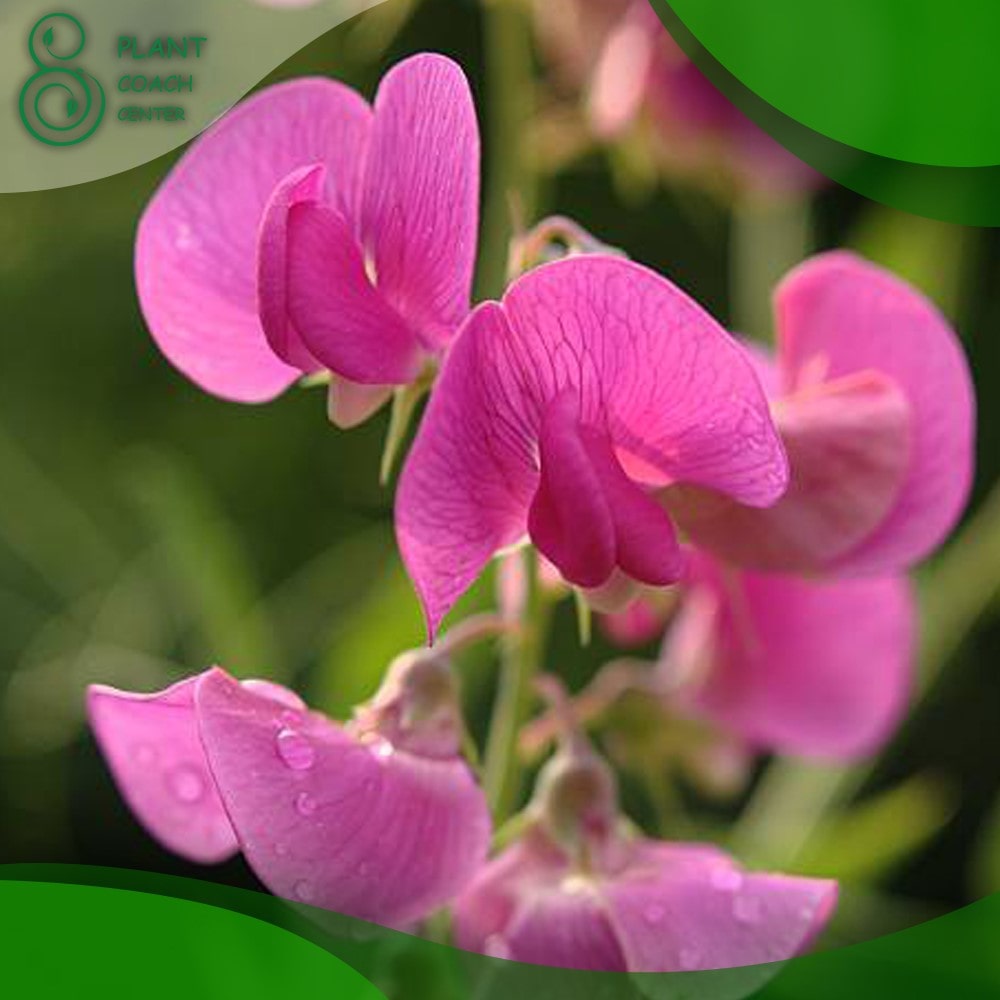When to Plant Sweet Peas Outside
Sweet peas (Lathyrus odoratus) are beloved flowering plants known for their vibrant colors, delicate fragrance, and charming climbing or bushy growth habit. As a gardener, understanding when to plant sweet peas outside is crucial to ensure their success in your garden.
In this comprehensive guide, we will explore the ideal planting time for sweet peas, provide insights into their growth requirements, discuss variety selection, and offer valuable tips and techniques for planting and caring for these delightful flowers.
At [plantcoachcenter.com] (https://www.plantcoachcenter.com), we are passionate about plant care and helping gardeners achieve their gardening goals. Whether you’re a novice gardener or an experienced enthusiast, this article will equip you with the knowledge and guidance needed to cultivate healthy and vibrant sweet peas throughout the growing season.
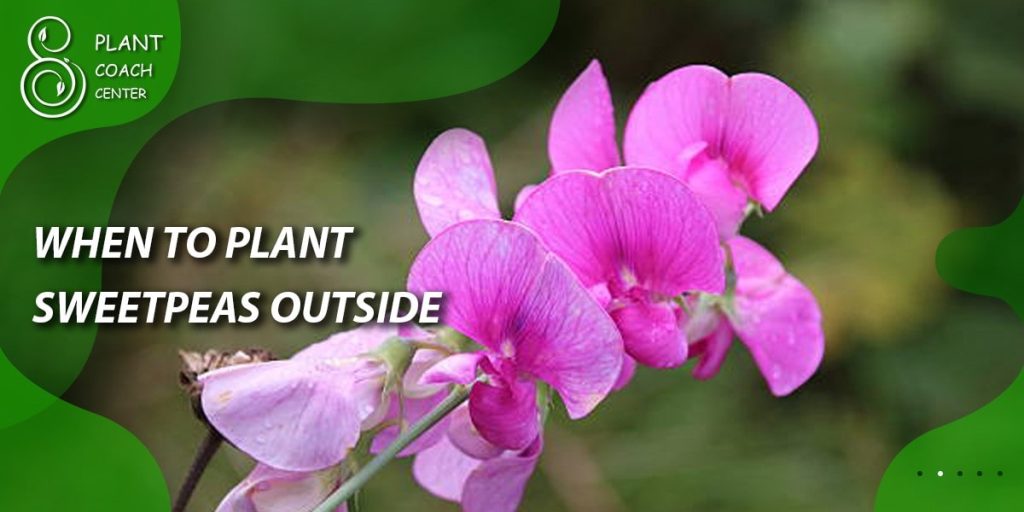
Understanding Sweet Pea Growth and Requirements
To grow sweet peas successfully, it’s essential to familiarize yourself with their life cycle, environmental preferences, and potential challenges. By understanding their growth requirements, you can create an optimal environment for these delightful flowers to thrive. Let’s delve into the key aspects of sweet pea growth:
- Life Cycle of Sweet Peas
Sweet peas undergo a specific life cycle, which includes germination, vegetative growth, flowering, and seed production. Understanding each stage will help you make informed decisions about planting and maintenance. Here’s a breakdown of the sweet pea life cycle:
. Germination: Sweet pea seeds typically germinate within 0 to 20 days, depending on temperature and moisture conditions. During this stage, the seed absorbs water, swells, and initiates root and shoot development.
. Vegetative Growth: After germination, sweet pea seedlings establish their root systems and begin producing foliage. This growth phase is crucial for the development of healthy and robust plants.
. Flowering: As sweet pea plants mature, they produce exquisite blooms in a variety of colors and patterns. The flowering period is the highlight of growing sweet peas, offering a visual spectacle and delightful fragrance.
. Seed Production: Following the flowering stage, sweet pea plants produce seed pods. Allowing some pods to mature and dry on the vine enables the collection of seeds for future plantings.
- Environmental Factors Affecting Growth
Sweet peas are influenced by several environmental factors that impact their growth and overall health. Paying attention to these factors will help you create an environment conducive to their success. Here are the key environmental considerations for sweet pea cultivation:
. Light Requirements
Sweet peas are sun-loving plants, requiring at least six to eight hours of direct sunlight daily. Position your sweet pea planting area in a location that receives ample sunlight throughout the day. Insufficient light may cause weak growth, reduced flowering, and increased vulnerability to diseases.
- Temperature Range
Sweet peas thrive in cool to mild temperatures, making them ideal for spring and fall planting. They prefer temperatures between 55°F (3°C) and 70°F (2°C) for optimal growth. High temperatures above 75°F (24°C) can cause heat stress and negatively affect flowering.
- Soil Preferences
Sweet peas prefer well-draining soil with a neutral to slightly alkaline pH level between 6.0 and 7.5. Soil that retains excessive moisture can lead to root rot and other diseases. Amending the soil with organic matter, such as compost, can improve drainage and enhance overall soil fertility.
- Common Problems and Challenges
While sweet peas are relatively easy to grow, they can face certain challenges that gardeners should be aware of. By understanding these common problems, you can take proactive measures to prevent or address them. Here are some frequent issues encountered when growing sweet peas:
– Pest Infestations: Aphids, slugs, and snails are common pests that may target sweet pea plants. Regular monitoring and appropriate pest control measures can help keep infestations under control.
– Diseases: Sweet peas can be susceptible to diseases such as powdery mildew, downy mildew, and root rot. Proper sanitation practices, good air circulation, and choosing disease-resistant varieties can minimize the risk of infections.
– Poor Flowering: Insufficient sunlight, high temperatures, improper nutrition, or inadequate pruning and training can result in reduced flowering. Addressing these factors can promote abundant and vibrant blooms.
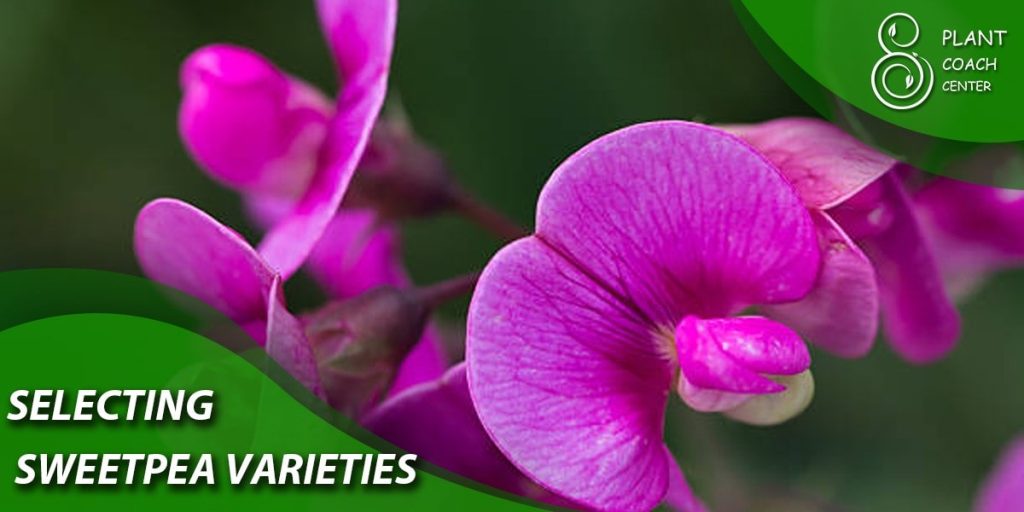
Selecting Sweet Pea Varieties
Sweet peas offer a wide array of captivating colors, enchanting fragrances, and diverse growth habits. When selecting sweet pea varieties for your garden, consider the following factors to ensure a delightful and successful growing experience:
- Popular Sweet Pea Varieties
. Spencer Sweet Peas: Spencer varieties are known for their large, ruffled flowers and strong fragrance. They come in a range of captivating pastel hues and bold, vibrant colors, making them a favorite among gardeners and florists alike.
. Old-Fashioned Heirloom Sweet Peas: Heirloom varieties often boast an intense, nostalgic fragrance and showcase classic charm. These varieties may have smaller flowers, but their captivating scent and historical significance make them highly sought after by enthusiasts.
. Modern Hybrid Sweet Peas: Hybrid sweet peas offer a wide range of colors, including unique shades and bicolored blooms. They often exhibit improved disease resistance, longer stems for cutting, and enhanced vigor, making them a reliable choice for gardeners.
- Factors to Consider When Choosing Varieties
. Climbing vs. Bush Varieties: Sweet peas are available in climbing and bush forms. Climbing varieties produce long vines that require support structures like trellises, obelisks, or fences to climb. Bush varieties, on the other hand, have a more compact growth habit and are self-supporting. Consider your garden space and the desired aesthetic when selecting between these two growth habits.
. Flower Colors and Fragrance: Sweet peas offer an extensive color palette, ranging from soft pastels to vibrant jewel tones. Consider the color scheme of your garden or floral arrangements to select the most complementary varieties. Additionally, pay attention to the fragrance of the sweet pea varieties, as some emit a stronger scent than others.
. Disease Resistance: While sweet peas are generally hardy plants, some varieties exhibit greater resistance to common diseases such as powdery mildew or fusarium wilt. Choosing disease-resistant varieties can minimize the risk of encountering these issues in your garden.
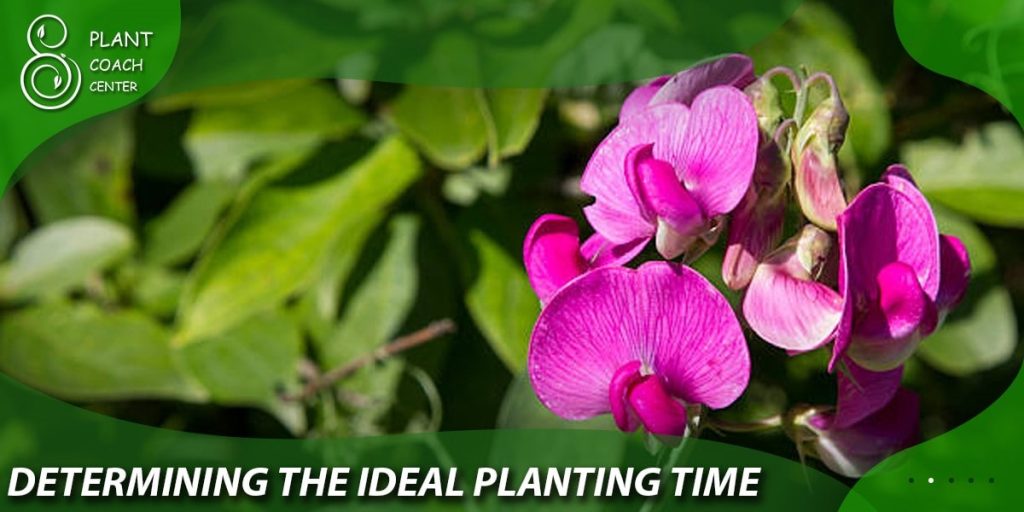
Determining the Ideal Planting Time
To ensure successful growth and abundant blooms, it’s crucial to plant sweet peas at the appropriate time. The ideal planting time varies depending on your climate, local frost dates, and other factors. Let’s explore the key considerations for determining when to plant sweet peas outside:
- Factors Influencing Planting Time
. Climate and Hardiness Zones: Sweet peas thrive in cool to mild climates, and their planting time depends on the average temperature range and frost occurrence in your region. Consult the USDA Hardiness Zone map or local gardening resources to determine your climate zone and make informed planting decisions.
. Average Last Frost Date: Planting sweet peas too early can expose them to frost damage, while planting too late may result in reduced flowering time. Knowing the average last frost date in your area allows you to plan your planting schedule accordingly.
. Soil Conditions: Sweet peas prefer cool soil for optimal germination and root development. Soil temperature should be around 50°F (0°C) for successful seed germination. If the soil is too cold or waterlogged, it can hinder seedling establishment and growth.
- Early Spring Planting
. Advantages and Considerations: Early spring planting allows sweet peas to establish strong root systems and develop sturdy vines before the arrival of warmer temperatures. This approach often results in earlier and more abundant flowering. However, early spring planting requires careful preparation and protection against potential frosts.
. Preparing the Soil in Advance: Several weeks before the anticipated planting date, prepare the soil by incorporating organic matter, such as compost or well-rotted manure, to improve drainage and fertility. Remove any weeds or debris from the planting area to provide a clean environment for the sweet peas.
. Protecting Seedlings from Frost: To safeguard young seedlings from late frosts, consider using protective measures such as row covers, cloches, or temporary plant shelters. These structures can provide insulation and protect delicate plants during cold snaps.
- Late Spring Planting
. Benefits and Considerations: Late spring planting offers the advantage of warmer soil and air temperatures, reducing the risk of frost damage. This approach is suitable for areas with shorter growing seasons or gardeners who prefer a simpler planting process. Late spring planting can also help sweet peas avoid potential early-season pests.
. Direct Sowing vs. Transplanting: Late spring planting allows for direct sowing of sweet pea seeds into the garden soil. Alternatively, if you started seeds indoors, you can transplant well-established seedlings directly into the garden. Both methods can be successful, and the choice depends on personal preference and local conditions.
. Managing Soil Moisture and Temperature: Late spring planting requires attention to soil moisture levels, as warmer temperatures can lead to faster evaporation. Regular wateringC. Late Spring Planting (Continued)
. Managing Soil Moisture and Temperature: Late spring planting requires attention to soil moisture levels, as warmer temperatures can lead to faster evaporation. Regular watering is essential to ensure adequate moisture for germination and seedling establishment. Mulching the soil surface with organic material, such as straw or wood chips, can help retain moisture and regulate soil temperature.
. Providing Support Structures: If you’re growing climbing sweet pea varieties, install trellises or other support structures shortly after planting. This allows the seedlings to establish their vines and ensures they have proper support as they grow.
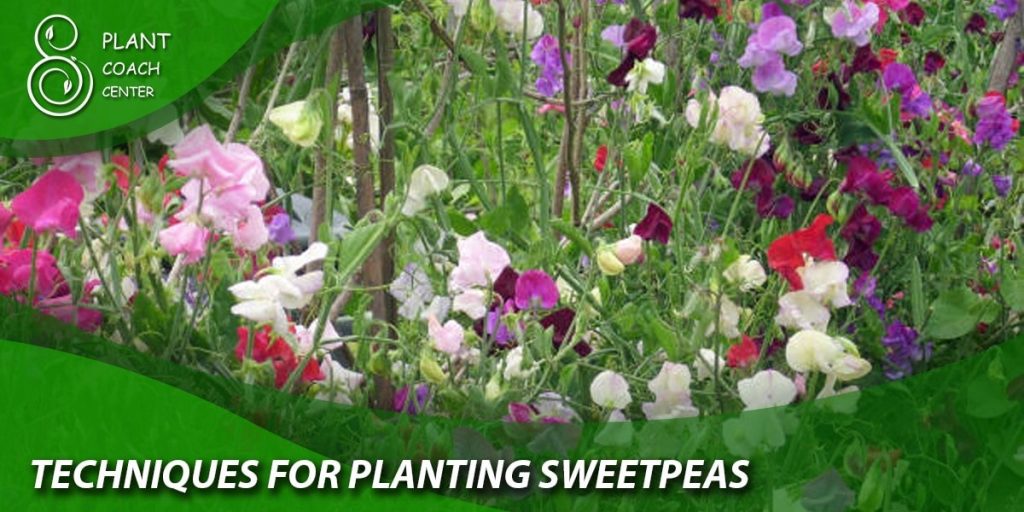
Techniques for Planting Sweet Peas
Planting sweet peas properly is crucial for their successful growth and development. By following these techniques, you can ensure optimal seed germination, strong root establishment, and vigorous growth:
- Preparing the Planting Area
. Choose a Sunny Location: Select a site that receives full sun for at least six to eight hours a day. Sweet peas thrive in bright, direct sunlight and produce more abundant blooms when exposed to ample light.
. Prepare the Soil: Prior to planting, prepare the soil by removing weeds, rocks, and debris. Loosen the soil with a garden fork or tiller to a depth of about 8 to 0 inches (20-25 cm). Incorporate organic matter, such as compost or well-rotted manure, to improve soil fertility and drainage.
. Soak Seeds Overnight (Optional): Some gardeners prefer to soak sweet pea seeds in water overnight before planting. This can help soften the seed coat and potentially enhance germination rates. However, it is not necessary for all varieties and may not significantly impact germination.
- Planting Sweet Pea Seeds
. Spacing and Depth: Sow sweet pea seeds about inch (2.5 cm) deep into the soil, spacing them approximately 2 to 3 inches (5-7.5 cm) apart. Maintain a row spacing of 2 to 8 inches (30-45 cm) between rows to allow plants to grow and receive adequate airflow.
. Watering After Planting: After sowing the seeds, water the planting area gently but thoroughly. Ensure the soil is evenly moist, but avoid excessive watering that can lead to waterlogged conditions and rotting.
. Installing Support Structures: For climbing sweet pea varieties, install trellises, stakes, or other support structures immediately after planting. This allows the seedlings to grow upward and cling to the supports as they emerge.
. Labeling and Mulching: To keep track of different varieties or planting dates, label each row or section. Additionally, apply a layer of mulch, such as straw or wood chips, around the base of the plants to conserve moisture, suppress weed growth, and maintain a more stable soil temperature.
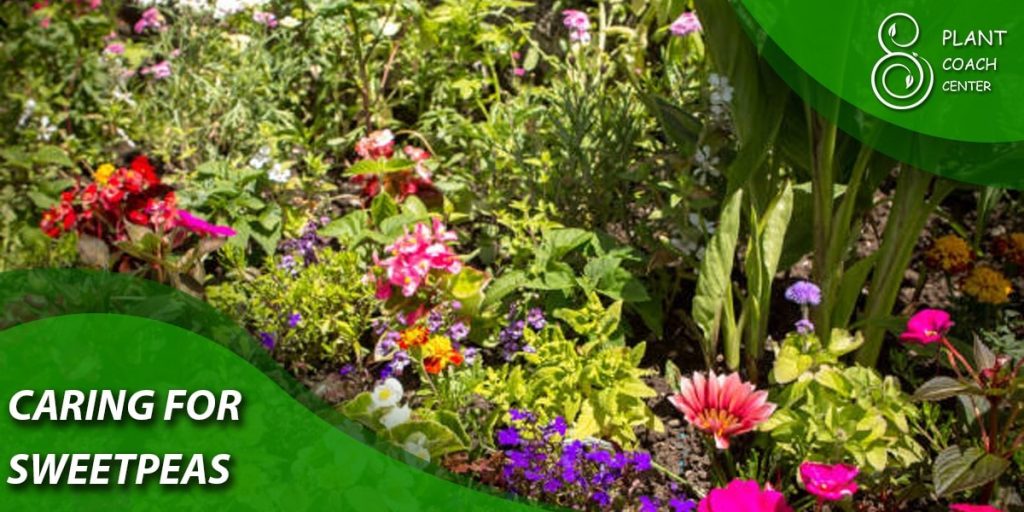
Caring for Sweet Peas
Once planted, sweet peas require ongoing care to thrive and produce abundant blooms. Here are essential tips for caring for your sweet pea plants:
- Watering and Moisture Management
. Regular Watering: Sweet peas prefer consistent moisture, so it’s important to water them regularly, especially during dry periods. Aim to keep the soil evenly moist but not waterlogged. Deep watering once or twice a week is generally sufficient, depending on the weather conditions.
. Mulching for Moisture Retention: Mulching around sweet pea plants helps retain soil moisture, reduce weed competition, and regulate soil temperature. Apply a layer of organic mulch around the base of the plants, taking care to keep it a few inches away from the stems to prevent rot.
- Fertilizing and Nutrient Needs
. Balanced Fertilizer Application: Sweet peas benefit from a balanced fertilizer with equal proportions of nitrogen (N), phosphorus (P), and potassium (K). Apply a slow-release or granular fertilizer according to the package instructions before planting or during the early stages of growth.
. Avoid Over-Fertilizing: While sweet peas appreciate nutrient-rich soil, excessive fertilizer application can lead to excessive foliage growth at the expense of flower production. Follow the recommended dosage and frequency specified on the fertilizer package to prevent over-fertilization.
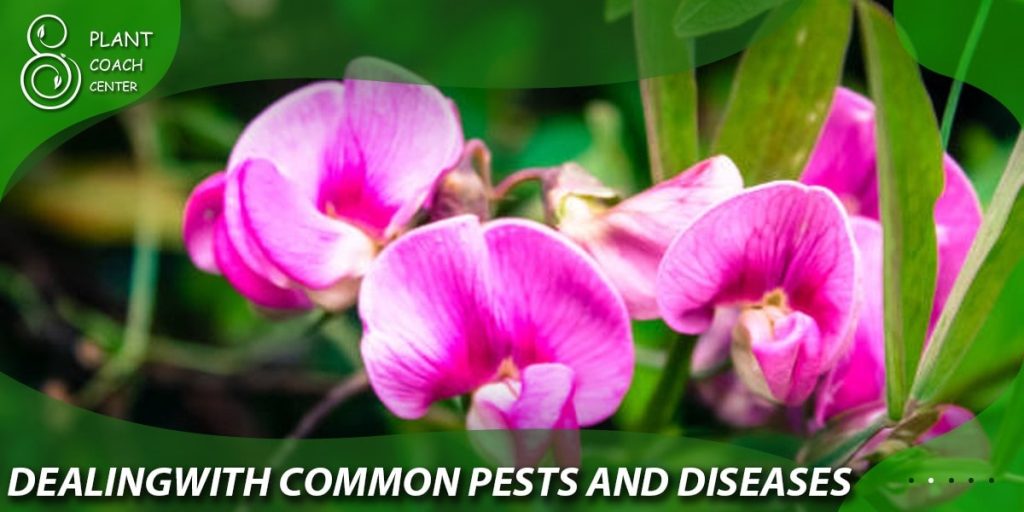
Dealing with Common Pests and Diseases
Despite their resilience, sweet peas can occasionally encounter pests and diseases that affect their health and vitality. Prompt identification and appropriate measures can help prevent or mitigate damage. Here are some common issues and methods for managing them:
- Pests
. Aphids: Aphids are small, sap-sucking insects that can distort new growth and transmit diseases. Use a strong jet of water or insecticidal soap to dislodge them from the plants. Ladybugs and lacewings are natural predators that feed on aphids and can help control their population.
. Slugs and Snails: These mollusks feed on sweet pea foliage and flowers, leaving behind irregular holes and slime trails. Use organic slug and snail baits, copper tape barriers, or handpick them in the evening when they are most active.
- Diseases
. Powdery Mildew: Powdery mildew appears as a white powdery coating on the leaves, stems, and flowers. Improve air circulation around the plants by spacing them adequately and avoiding overhead watering. Fungicidal sprays or treatments containing sulfur or neem oil can help manage powdery mildew.
. Gray Mold (Botrytis): Gray mold causes brown spots and fuzzy gray growth on sweet pea flowers and foliage. Remove and discard infected plant material promptly. Ensure good air circulation and avoid overhead watering. Fungicidal sprays can be used if necessary.
Harvesting Sweet Peas
The reward for your care and attention to sweet peas is the joy of harvesting their fragrant blooms. Follow these guidelines to ensure that you harvest sweet peas at their peak and extend their vase life:
. Flower Development: Sweet peas typically begin blooming about 0 to 2 weeks after sowing. Flowers are ready for harvest when they are fully open and show vibrant colors. Harvesting blooms regularly encourages more flowers to develop.
. Morning Harvest: Harvest sweet pea flowers in the morning when the temperatures are cooler. Choose flowers that are just starting to open fully, as they have the longest vase life.
. Stem Length: Cut sweet pea stems at an angle, ensuring they are long enough to fit your desired vase or arrangement. Longer stems are generally preferable for floral displays.
. Water Immediately: After harvesting, place the sweet pea stems in a container of water immediately. Remove any foliage that may be submerged in the water to prevent rotting.
. Preserving Vase Life: To extend the vase life of sweet pea blooms, change the water every two days, recut the stems at an angle, and provide a floral preservative in the water. Keep the flowers away from direct sunlight, heat sources, and fruit, as ethylene gas from ripening fruit can hasten their wilting.
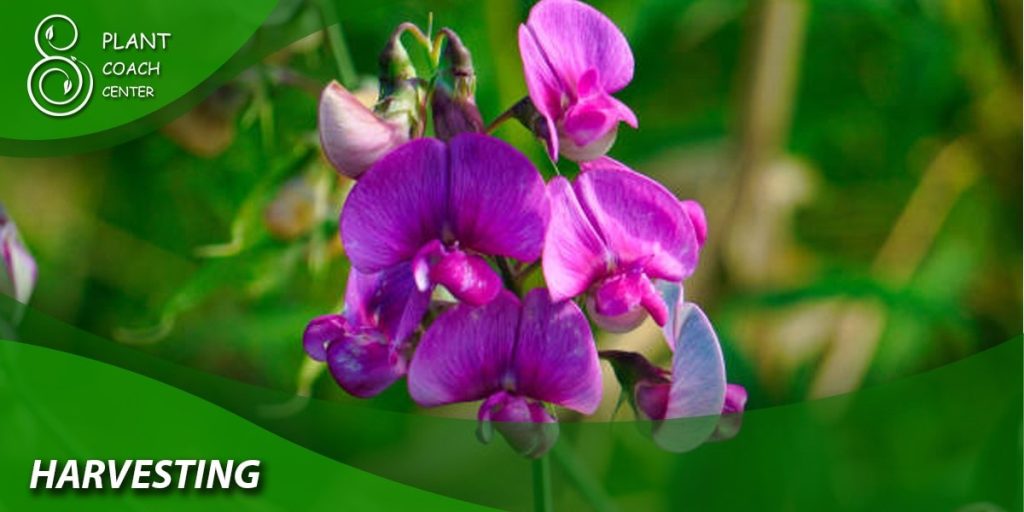
Conclusion
Growing sweet peas can be a rewarding and delightful experience. With their stunning colors, heavenly scent, and climbing habit, these flowers add charm and beauty to any garden or floral arrangement. By providing the right conditions, support, and care, you can enjoy an abundance of sweet pea blooms throughout the season. Whether you’re a seasoned gardener or a beginner, cultivating sweet peas will surely bring joy and satisfaction as you witness their vibrant growth and relish the rewards of your efforts. Happy gardening!


